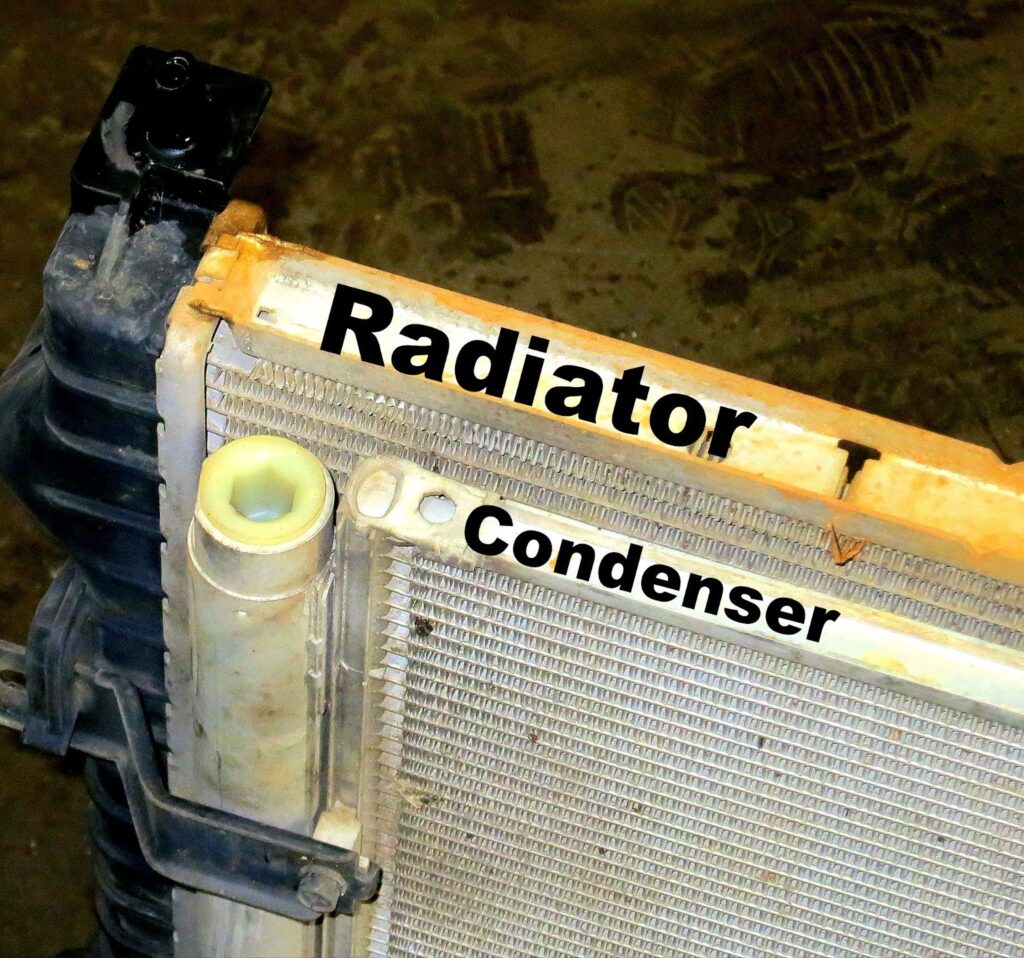Q: Where Is the Condenser Typically Located?
A: The A/C condenser is typically placed right in front of the vehicle’s radiator, which is located behind your vehicle’s grilles or in front of the engine bay. Given its size and configuration, the A/C condenser can look like a mini-radiator.
This is the case for the 2005 Ford F-150. Its A/C condenser is almost the same size as its radiator and sits right in front of it. Similarly, the condenser for a 2017 Honda Civic is also in the same place. For many vehicles, finding the A/C condenser is as simple as looking in front of your vehicle’s engine bay. Sometimes, however, you can only see it by looking through the grille.
The condenser is part of the vehicle’s air-conditioning (A/C) system that’s responsible for dissipating heat from the refrigerant. Without it, the A/C system won’t create cold air.
Tips On How to Access the Condenser

Caution: Always wear eye protection when working with refrigerant of any kind. Never vent refrigerant to the atmosphere; it’s illegal.
Accessing the condenser sometimes involves removing the vehicle’s grille. But more often, the condenser is removed by removing the radiator, to which the condenser is often firmly attached. Before removing the condenser, you’ll need to remove the existing refrigerant charge with special equipment that you probably won’t have. Bring your car to a mechanic if you don’t have the necessary tools and DIY knowledge to work on your A/C system.

Any information provided on this Website is for informational purposes only and is not intended to replace consultation with a professional mechanic. The accuracy and timeliness of the information may change from the time of publication.































